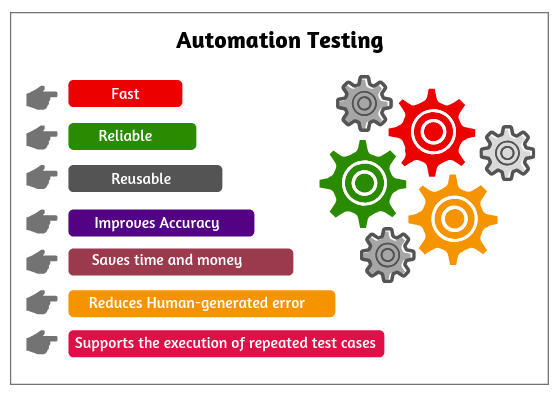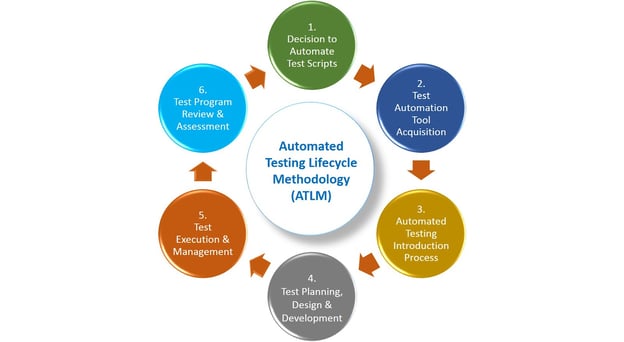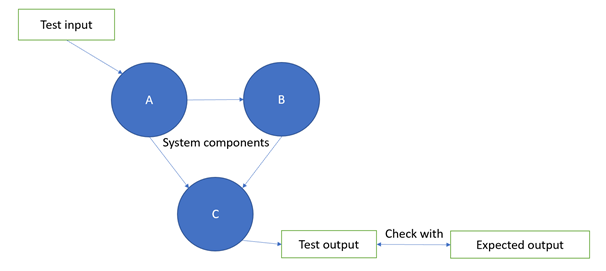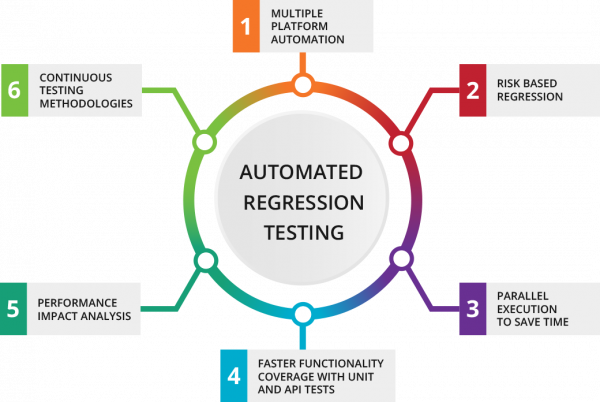What is automated QA testing?
Software is becoming more and more complex, while consumer demand grows ever higher. Developers are under increasing pressure to deliver new apps and updates at a rapid pace—but thorough testing is still necessary to detect bugs and ensure software quality.
It’s not surprising, then, that many organizations use automated testing to speed up workflows and maximize the efficiency of the quality assurance (QA) process. While manual testing will always be important, automation can help startups and large businesses alike save time and money.
Here, we’ll explore what automated QA is, how it’s used, and why it can benefit your company.
What is automated QA?
QA is a subset of the software development life cycle (SDLC), and QA automation means using automated testing tools to run tests on the software being developed and report on the results.
Automation testing handles many of the time-consuming tasks that were previously carried out by manual testers. It’s especially useful for continuous integration and continuous delivery, where software is developed, tested, and deployed multiple times per day, rather than in stages.

In traditional software development, the coding and testing processes were treated as separate stages, but automated QA means testing takes place more frequently—so it’s easier to spot problems as you go along.
Difference between manual and automated QA testing
Automated QA testing relies entirely on specialized tools to execute test cases and generate results, whereas manual testers follow a written test plan and report the defects to developers. The two methods can be used concurrently, but each is best used in a specific area.
Manual testing is ideal for assessing the user experience (UX), and the look and feel of an application—which can only be done by a human. It’s most often used for newly-designed test cases, and on an ad-hoc basis for test cases with changeable requirements.
Automated testing runs on frameworks created by testers. It’s suitable for large-scale software testing, and is generally more accurate than manual testing. The major benefit is that it saves time, especially in regression testing which can become tedious for manual testers.
The manual testing process cannot be recorded, but automation test scripts are reusable—so automated QA is a boon for repeated execution testing and successive development cycles. Automated tests can be run 24/7 without the need for manual input, although manual testing procedures can be used to cross-check results.
How does QA automated testing work?
There are a number of important stages in the automated QA testing process, which typically runs in parallel with the software development life cycle.
1. Define the scope
First, consider what the testing process aims to achieve, and run a feasibility analysis. Which of the tests can be automated and which require manual involvement? You’ll also need to factor in aspects like budget, personnel, and expertise.
2. Choose an automation tool
Obviously, you need a tool that fits your requirements, but the choice will also depend on the technology of the web app you’re testing. There are plenty of automation tools to choose from, so consider cost, functionality, intuitiveness, and flexibility. Make sure the QA team receives guidance on how to get the best out of the chosen tool.

3. Design a strategy
The QA team should create a test plan that sets out the approach and end-goal of the project, and choose a suitable framework for the test cases to operate in. The framework should contain common practices, testing tools, and standards. Common test automation frameworks include data-driven, keyword-driven, linear scripting, and modular testing.
4. Set the environment
It’s necessary to create the right environment for testing, and maximize test coverage across multiple scenarios. The test team will schedule and track environment setup activities such as installing software and hardware, and developing test bed scripts. This process can be time-consuming, so consider employing a company like Global App Testing to help.
5. Write a script
At this stage, QA engineers will write scripts to perform the tests, based on actual requirements and scripting standards. Scripts should be reusable, structured, and easy for a third person to understand.
Open-source tools such as Selenium WebDriver, Appium, and Android Monitor allow you to create your own automated test scripts, and test web applications across multiple browsers in various programming languages like Java and Python.
6. Execute the tests
There are two main ways to automate QA testing: GUI (graphical user interface) testing and API testing. GUI is a type of QA testing that aims to imitate the user experience with software such as TestComplete. It can be run the same way each time, or test different software features in each iteration.
API testing is used to test the application programming interface. It is used to assess in-house and third-party APIs, with a focus on assessing end-to-end transactions and individual components.
In the next section, we’ll look at some of the different types of software tests.

7. Analyze and report
Once the tests have been executed, the automated tool will generate a report. The results will show which components contain bugs or defects, and whether or not additional testing is required.
Types of software test
Different software tests are suitable for different scenarios, and which to use will depend both on the application being tested and your development methods. We’ve picked out some of the most popular methodologies, which can be used singly or more often in combination.
When choosing which tests to automate, it makes sense to prioritize tests that will run many times during the project. Automating the most basic tests will free up the team to handle the more advanced stuff.
1. Unit tests
Unit tests involve testing individual components (or units) of an application, to ensure that each one performs as expected. Often designed by the same programmers who wrote the code for the unit, they are one of the easiest QA tests to automate.
Unit testing makes bug-spotting easier, as it’s specific enough to pinpoint an issue. Debugging is simple, too, as only the latest changes need to be fixed when a test fails. Defects are usually fixed as soon as they’re found.
2. Integration tests
Integration tests handle multiple components at once to see how the software works as a whole, or how it performs with hardware. For example, it could check whether an ecommerce app sends a confirmation email when a customer makes a purchase.
Integration testing concentrates mainly on the interfaces and information flow between the modules, rather than the unit functions which have already been tested.

3. Functional tests
Functional tests check that the software can perform a set of functions, as determined by the requirement documentation. Manual testers or automated tools provide suitable input and make sure the output is as expected.
Functional testing uses black-box testing techniques, in which the tester has no knowledge of the underlying code.
4. Smoke tests
Smoke testing is a further assessment used by testers to see if the software’s main functions work correctly. It’s also known as build verification testing, as it checks the stability of the software build. Developers can fix any issues there and then, before proceeding with the next stage of testing.
5. End-to-end tests
This is a more comprehensive test, which checks the entire software product from beginning to end and ensures that all the integrated pieces run as intended. It aims to replicate real user scenarios, and focuses on aspects of the system that cannot be reliably evaluated with smaller tests.
6. Performance tests
Performance testing is a series of non-functional tests used for checking the speed, stability, and reliability of the software under a particular workload—such as the amount of people using the app at any one time. The aim is to ensure the software satisfies performance requirements, and to identify and fix performance-related bottlenecks.
7. Regression tests
Regression tests are used to confirm that a recent change to the program or code has not adversely affected the app’s existing features. It basically means re-running functional and non-functional tests as a final check before the product is released.

The rewards of automation
Overall, automated testing is a great way to save your company time and money by speeding up the testing process and delivering a higher level of accuracy. It also frees up the QA team for more advanced testing and enables you to expand test coverage, leading to better quality products.
Automation won’t do absolutely everything for you—you’ll still have to pick the right tools, and plan, create, and maintain the tests. And remember that some level of manual testing will always be necessary.
If you use automated testing alongside manual testing, you have the best chance of catching a high number of bugs and defects. Experts like Global App Testing can help you combine the two methods for maximum effect—visit the website to learn more and chat with a friendly agent.

